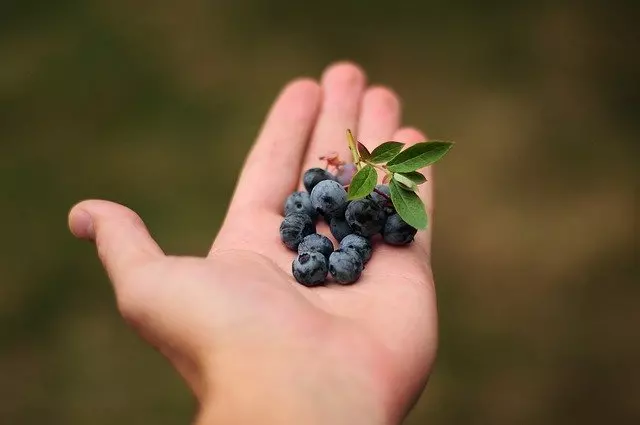Vaccinium corymbosum, usually called blueberry, is a shrub known for its small fruits in the form of round berries, sour and sweet taste. It is a great option for planting in many orchards if the minimum necessary conditions are met since it begins to bear fruit from its first year outdoors and in large quantities. Learn how to grow blueberries step by step in this article.
Table of Contents
When to Grow Blueberries
Blueberries are best grown in cold climates, so they are preferably sown during the autumn-winter period, as the flowering time should be free of the frost period. If sowing by cuttings, these can be planted during autumn, from October to November, or in spring, from mid-April to the end of May. (Northern Hemisphere)
Where to Grow Blueberries
Blueberries should be grown where they receive as much direct sunlight as possible. Their optimum temperature is between 60 and 77°F (16 and 25°C).
Blueberries grow best in acidic, sandy, sandy loam, or clay soils. Preferably, not too deep, with good drainage and low fertility. The optimum pH is around 4.5 and 5.5.
To measure the pH of the soil you should buy a pH tester as we use (for sale here). The good thing about the model we recommend and use in our garden is that it does not require batteries for its operation.
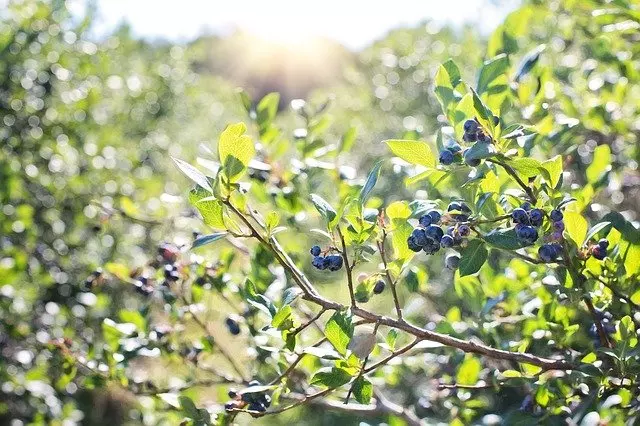
How to Grow Blueberries from Seed
Sowing blueberry seeds is a rarely used process since it is much more productive to propagate the plant by cuttings, which are planted directly in their final location.
But even though we will explain how to grow blueberries from seed, you should know that it is advisable to sow blueberry seeds between autumn and winter. To do so, follow these steps:
- Before sowing them, it is important to let them soak for about 24 hours in a glass of water.
- From there transfer them to a medium-sized pot with a universal seed substrate.
- Plant up to two seeds in each pot.
- Water abundantly to provide moisture both before and after covering.
- The second time uses a spray bottle so they don’t get washed away.
- Leave the pot in a semi-shaded location and water again whenever the substrate dries out.
- When spring arrives, they should start to germinate.
Blueberries from Cuttings or Seedlings
If you opt for the cultivation of blueberries from cuttings or seedlings, which is the most common and fast, the beginning of winter is the best time for it. The good thing about this is that it is a good opportunity to take advantage of those spaces in the garden that are empty in winter, with the summer crops already removed.
As they need acid soil and become shrubs of considerable size, an ideal option is to place them on the outer limits of the orchard or plot, so that they act as a natural barrier against the wind and their need for acid soil does not harm the rest of the land. These are the steps to grow blueberries from seedlings.
- When the soil is prepared, make a deep hole to bury the blueberry seedlings a few centimeters deeper than they were in the pot,
- Carefully remove the plant from the pot, taking care not to break the roots, and place the seedling in the hole.
- Cover all the roots with soil and press down a little to compact them, making sure that the stem is straight and secure.
- When you have finished placing the seedlings, water them.
- Emerald is the considered the standard Southern Highbush Plant. It's a great healthy plant, good large berry and has a great compact growing habit with low chill requirments.
- The price includes Four (4) "Emerald" Southern Highbush Blueberry Plants with 4 Hello Organic Plant Tags. These are 2 1/4 inch potted plants with at least a two inch root system and are at least 3-5 inches tall.
- Emerald is the most planted Southern Highbush in Florida
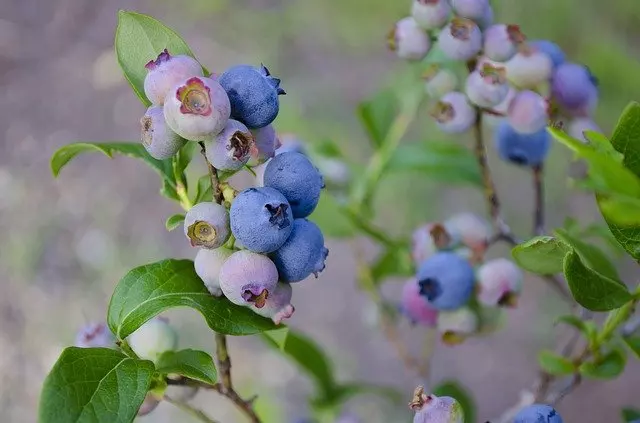
How to Grow Blueberries – Guide with Tips and Steps
Now that you know that the beginning of winter and the end of autumn is the best time to grow blueberries cuttings or seedlings, you should pay attention to the needs of this plant.
Soil and Space for Blueberries
First and foremost, blueberries, like many berries, need more acidic soil than usual. Acidify your soil by adding pine needles that you mix with the soil a few months before planting blueberries. If you think you need more, the best thing to do is to have a specialist test the pH of your soil to recommend how much sulfur to add to the soil to achieve the desired pH. If you dare on your own, pH measuring methods can also be purchased for you to use yourself.
As mentioned above, it is best to place them outdoors at the edge of the garden. Next is the spacing of the seedlings. Depending on the species of blueberry, you should leave from 3.2 ft (1 m) between plants, up to 13 ft (4 m) for larger species and variants. Pay attention to what size your purchased variety reaches and leave a space accordingly.
The soil for blueberry, in addition to acidity, must have excellent drainage. Blueberries should be watered abundantly, but we must avoid waterlogging the soil. Therefore, it is necessary to have soil that easily removes excess moisture, avoiding waterlogging.
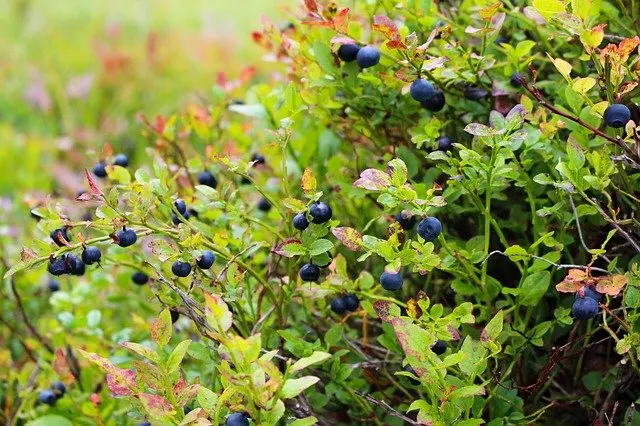
Temperature and Location
As for the location and temperature of the blueberry, this plant withstands low temperatures very well, even withstands severe frosts. So much so that it can withstand temperatures as low as -22°F (-30°C) in winter. It needs to spend the cold months below 44°F (7°C), or in spring it will not fruit with the usual strength.
Blueberry is very resistant to cold, but heat is very dangerous for this shrub. If you live in an area with mild summers there is no problem, but if your climate is very hot, you will need to place your blueberries in a semi-shaded area, or both the plant and its fruits will be quite damaged.
How to Harvest Blueberries
The first harvest is between 3 and 5 years of age of the plant. Once the plant produces fruit, you should harvest the berries during the fall.
When ripe, the berries will be light or dark red, and, inside, the seeds will be brown.
Blueberries can be easily harvested by hand. Once harvested, they will remain fresh for 28 days if stored in an airtight container in the refrigerator at 30 to 32°F (-0.6 to 0°C) and 95% relative humidity.
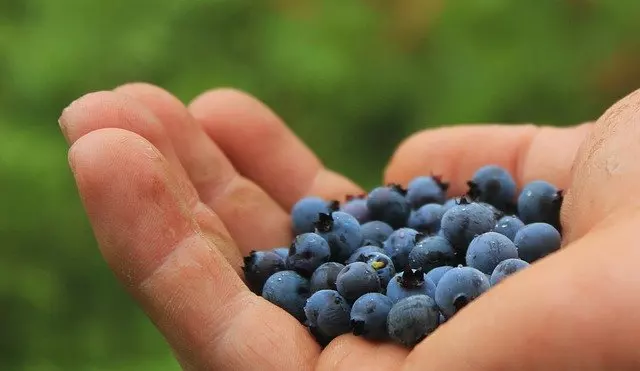
Blueberry Pests and Diseases
We must protect our blueberry crops. Some of the most common pests and diseases affecting blueberries are:
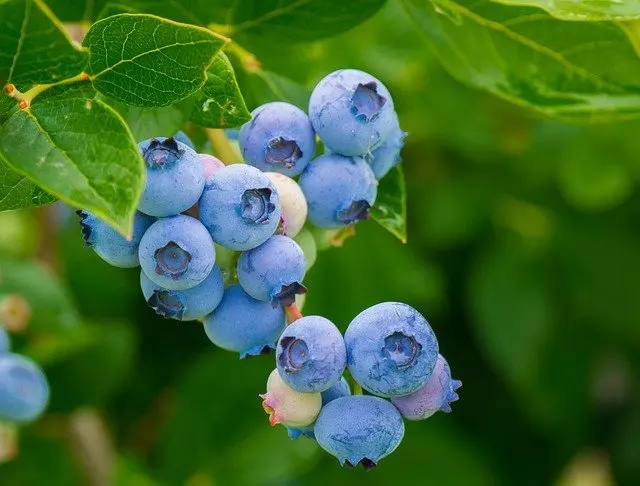
Predators
Birds, lagomorphs, and rodents. To prevent blueberry crops from being eaten, it is best to protect the plant with protective netting. In our garden, we use protective netting to protect our fruits. (Order here).
Blueberry Maggot
To prevent their appearance, weeding is recommended.
Another good solution is to plow the soil superficially during winter to expose the bugs to frost, thus reducing their population.
It is important to monitor the early stages of crop development because attacks on them are very serious and can be irreversible by affecting shoots and stems.
The application of Bacillus thuringiensis is effective against this pest.
Septoria
Fungus that dries the plant and causes its leaves to spoil. Horsetail extract can be applied as an ecological fungicide.
Anthracnose
It occurs when the fruit reaches maturity.
To prevent it, try not to harvest if the weather is very humid. It is also recommended to irrigate by drip or sprinkling and to apply horsetail. Neem oil is also a good solution.
I recommend to use the same organic neem oil that we use in our garden. (Order here).
We also explain how to mix neem oil for plants.
It is also essential to promote good ventilation of the crop.
